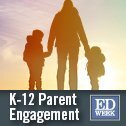
Under both the No Child Left Behind Act’s school improvement sanctions and the Obama-era school improvement grants, school closure has been promoted as a key way to move students to a better education. But new research suggests it may leave some students and communities in the lurch.
In the decade from 2003-04 to 2013-14, about 2 percent of public schools nationwide closed, turning out about 200,000 students, according to a new study of school closures by the Urban Institute. While urban schools were disproportionately at risk of being shuttered, rural communities may have a harder time making up for their loss.

Urban Institute senior researchers Megan Gallagher and Amanda Gold tracked both school closures and the development of new schools from 2003-2014, using federal data. In urban and suburban communities, schools with higher percentages of black or poor students were likelier to be closed.
They found that while urban schools made up only 14 percent of all schools during that time, they accounted for 21 percent of all schools closed. But in urban areas, about 24 percent of the time a new school serving the same grades opened within a half mile of the closed schools: Only 13 percent of suburban closures and 17 percent of rural schools were replaced by a school serving the same grades.
“Our goal was really to be able to connect the ways community developers think about schools and the ways education policymakers think about schools,” said Gallagher, who presented the findings to the Federal Reserve Board last week. “I do think this study raises questions about whether access to schools is changing for black students and poor students. They are disproportionately affected by school closures,” particularly in rural and suburban areas where students already face longer commutes to school.
Community Investments
But beyond just school demographics, Gallagher and Gold also found disparities in the communities surrounding open and closed schools. The neighborhoods around schools that closed had on average lower property values and housing occupancy, and more residents with low education levels, suggesting, Gallagher said, that “a school closure is an extension of ... a disinvested community.”
“What this study really makes the case for is that education policy doesn’t happen in a vacuum, and education policies intended to improve children’s achievement also affect communities,” she said. “Nobody wants to disrupt student learning but the decisions that they make inadvertently create instability in their communities, which can have a negative affect on their achievement.”
On Wednesday, we’ll look at how changing school accountability has affected school closures.
Related:
